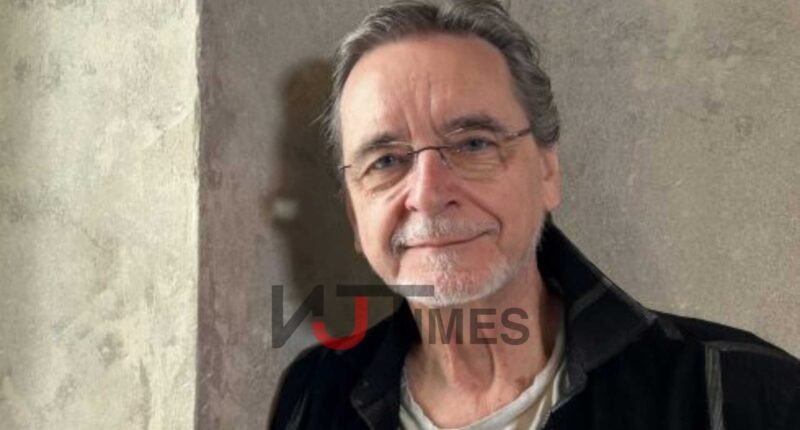Table of Contents
Jiří Kylián, at 78, finds catharsis and acclaim in a sprawling Norwegian tribute that honours his groundbreaking career—while candidly confronting the British cold shoulder and reflecting on his own complex legacy.
Oslo turns into Kylián’s canvas
A carnival of colour, motion and memory has enveloped the Oslo Opera House, where a rare and expansive festival titled Wings of Time is celebrating Jiří Kylián’s sweeping influence on modern dance. With performances tumbling down the building’s sloping roof to Prince’s iconic beats and sculptures diving through its glass façade, the Norwegian capital is playing host to more than just dance—it’s witnessing a full-spectrum homage to a once-reluctant star now embracing his legacy.
The eclectic showcase, which runs until 14 June before embarking on a limited tour, includes ballets inspired by everything from Edvard Munch’s tortured brushstrokes to Zen Buddhist symbols. Film, visual installations, and movement compositions all converge on one core idea: the sheer depth and diversity of Kylián’s creativity.
‘Not a spring chicken’: a moment of late-life affirmation
Speaking with typically dry humour and characteristic candour, Kylián acknowledged the poignancy of the moment. “I’m 78 and I know that the end of life is nearing,” he said, adding that such a retrospective, coupled with new creations made specifically for the festival, was both humbling and surreal. “I must have done something right!”
Despite his enduring legacy—over 100 choreographic works, a transformative tenure at Nederlands Dans Theater, and a revered reputation in global circles—Kylián still wears his vulnerability on his sleeve. “I’m not a particularly confident person. It might look like I am, but I’m not really,” he admitted.
A British beginning, a British rebuff
Ironically, Kylián’s journey to international acclaim began in the UK. A young protégé spotted by arts minister Jennie Lee in 1960s Prague, he received a scholarship to the Royal Ballet School and brushed shoulders with legends like Margot Fonteyn and Rudolf Nureyev. But the warm early embrace eventually turned cold.
Despite earning the prestigious Laurence Olivier Award in 2000 and staging celebrated works abroad, Kylián laments being “totally negligible” in Britain’s dance programming. “Anywhere except Great Britain,” he noted, swiping through a digital calendar of upcoming global productions. “I have no idea why.”
His frustration is not without historical sting. Critics like the late Clement Crisp dismissed his pieces with almost curt disdain. “I don’t mind being criticised,” he said, “but I don’t like to be insulted.”
Holding court at NDT and beyond
Kylián’s creative dominance at Nederlands Dans Theater from 1975 to 1999—and choreographic contributions until 2009—turned the Hague-based company into a global powerhouse. Yet managing 32 dancers while wanting to create for only six at times proved emotionally taxing. “Six happy people and 26 unhappy people,” he recalled, describing the director-choreographer tension with sobering clarity.
Always hands-on, Kylián often controlled design and lighting, arguing that “a terrible ballet well lit is better than a great ballet badly lit.” His commitment to aesthetic unity extended to music, where he increasingly sought to disrupt rather than reflect the score—recomposing classics through a modern lens to create something altogether new.
Chapeau, Prince, and the pull of visual art
One of the festival’s most delightful moments came in Chapeau, a rooftop flashmob danced to a Prince track, originally choreographed for the jubilee of Queen Beatrix. Kylián still rues never speaking to Prince during a shared moment in Holland. “Then he died a year or so after,” he said quietly.
Now based in the Netherlands, Kylián sees his future less on the stage and more in film and visual art. “The energy is not enough,” he admits of creating new choreographies. Yet his creative spirit remains defiantly restless.
‘Said through me’: the mystery of mastery
There’s an almost mystical humility to Kylián’s account of making Whereabouts Unknown—a six-minute duet choreographed in a single day. When he finally paired it with Charles Ives’s Unanswered Question, every movement landed with uncanny synchronicity. “Sometimes I really don’t know how or why things happen,” he said. “I look at it and think, I’m not sure if it’s by me.”
That gentle astonishment, more than anything, defines Kylián’s artistic persona: a craftsman of immense control and vision who still marvels at the alchemy of his own work. In Oslo, at least, that wonder is being returned in full measure.
Credit: The Guardian
New Jersey Times Is Your Source: The Latest In Politics, Entertainment, Lifestyle, Breaking News, And Other News. Please Follow Us On Facebook, Instagram, And Twitter To Receive Instantaneous Updates. Also Do Checkout Our Telegram Channel @Njtdotcom For Latest Updates.










